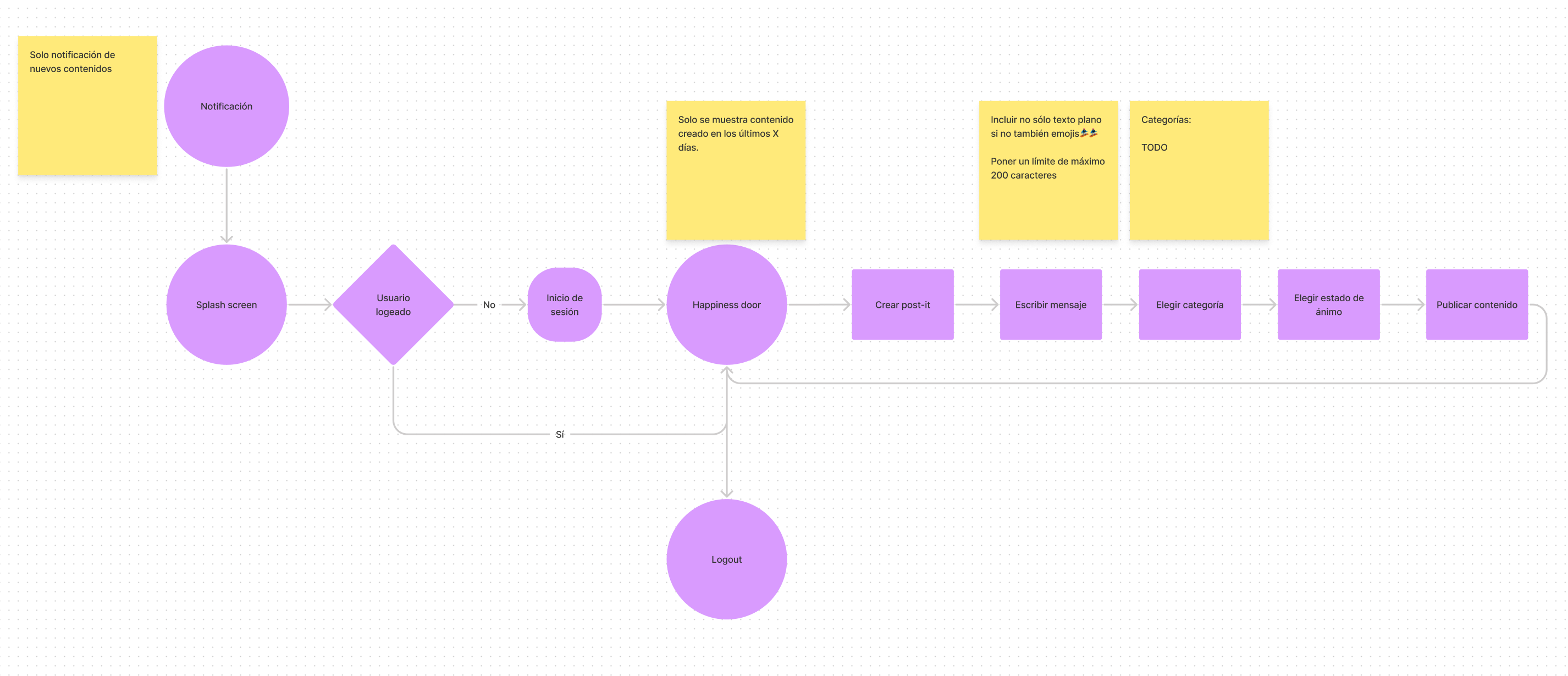
Based on the homonymous tool from Jurgen Appelo, The Happiness Door is a practice to give to people feedback quickly. It is the result of an internal hackathon in Kypseli. Although the initial plan was to recreate the tool, we wanted it to be actually somehow useful for the team. The use we ended up giving this app was to give (constructive) feedback or kudos to our coworkers not only after a session, but generally during the week.

We planned to have an initial brainstorming session to define the product and then working separately, but together.
Since we were starting simultaneously, we had to plan a schedule to design and develop at the same time. We started with a brainstorming to decide on the product that we were going to work on. The next step was to define together the main features and set up the bases of the development while I was designing some quick low-fidelity wireframes.
Then, the developers would start making the structure and some behavioral features while I was making the visuals. We defined the basics such as colors and fonts quite early, inspired by our own studio brand.
The final steps on my side were the creation of the assets and logo creation for the launcher.
We started with a team brainstorming, in order to ideate the features of the product. We had to dispose of features whose development would be too time-consuming if they didn't add significant value.
I led the brainstorming, which lasted around 1 hour. We had to keep it simple since it had to be ready to use by the end of the day. What is the key feature of the app? Why? How can we build it most efficiently?
The result of the session was a user flow of the app. This also contained all the technical requirements for the development of the MVP, such as maximum characters per card, push notifications, order criteria, and so on.

We wanted to recreate a door full of post-its. The concept behind the original Happiness Door is that the higher the post-it, the more positive the feedback.
When we entered the app, first there was a login. Once we logged in, we would see a board where the cards would be displayed. We decided to draw a line between three areas, so they were clearly differentiated: positive cards, neutral cards and negative cards. Each area would have a horizontal scroll to show the hidden content. Usually, they are marked with faces, but we decided to change them to weather symbols.
To fill the board with cards, we needed a card creation button, which would be the call-to-action button in the app, since it's the main action. There, the user can choose the mood and category, and write down the message/feedback on the board. We would include a shortcut button in each area later, to post directly inside of one area.
Lastly, we would define the order in which the cards are shown and the time that they would last before they disappear.